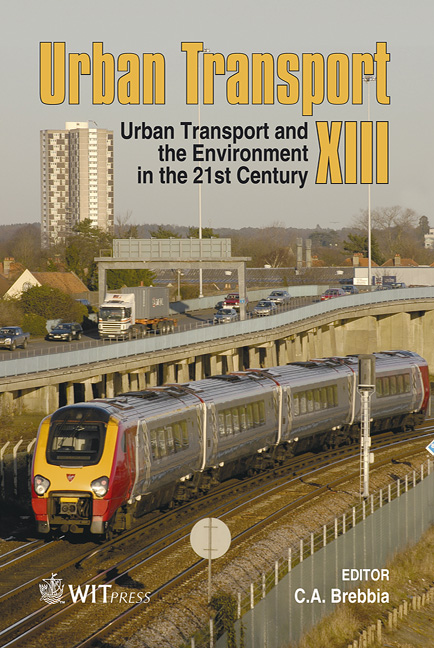Urban Public Transport Optimization By Bus Ways: A Neural Network-based Methodology
Price
Free (open access)
Transaction
Volume
96
Pages
10
Published
2007
Size
592 kb
Paper DOI
10.2495/UT070331
Copyright
WIT Press
Author(s)
M. Migliore & M. Catalano
Abstract
This paper describes an approach for planning the introduction of bus lanes into the urban road network, which has been applied to the urban area of Palermo. The proposed modelling tool adopts a multi-agent objective function expressing the trade-off between the interests of diverse stakeholders: the generalized transport cost for car drivers and the travel time for public transport users. The reaction of car traffic to a certain planning scenario has been simulated by the DUE assignment technique and the positive impact of the modal shift on the objective function has been tackled by attaching a suitable weight to the time saving for bus passengers. The rise in the bus travel speed, owing to the bus lane solution, has been predicted for a set of urban roads by a neural network, so as to take into account many quantitative and qualitative road attributes. The optimal location pattern of bus ways has been searched by a greedy heuristic that through a step-by-step strategy builds the problem solution by keeping, at each stage, the best alternative. Keywords: urban public transport, bus way design, welfare function optimization, neural network, greedy heuristic. 1 Introduction Bus lanes represent an effective tool for buses to bypass the congestion at critical sections of the urban road network, especially during rush hours. Furthermore, they consist in a transport policy action that can be easily implemented. In detail, bus lanes imply the following advantages: • A rise in the bus travel speed, generally speaking, from 10 Km/h to 13-15 Km/h. • The punctuality of the public transport service.
Keywords
urban public transport, bus way design, welfare function optimization, neural network, greedy heuristic.





